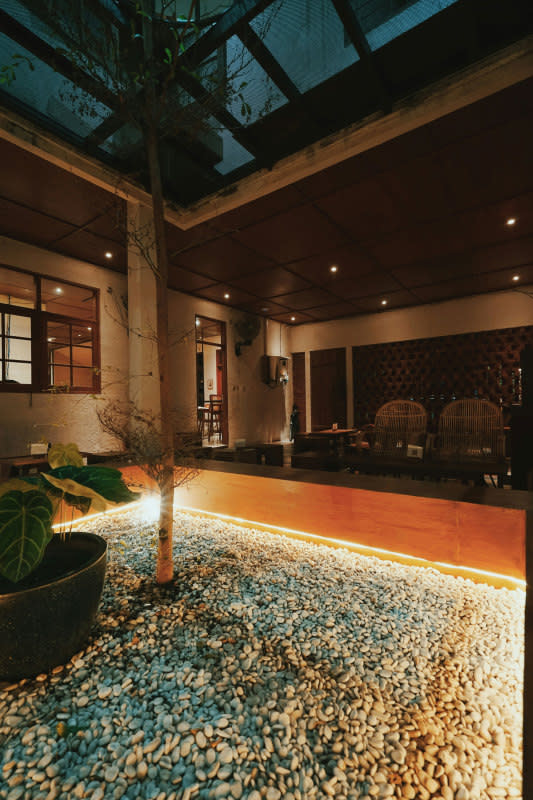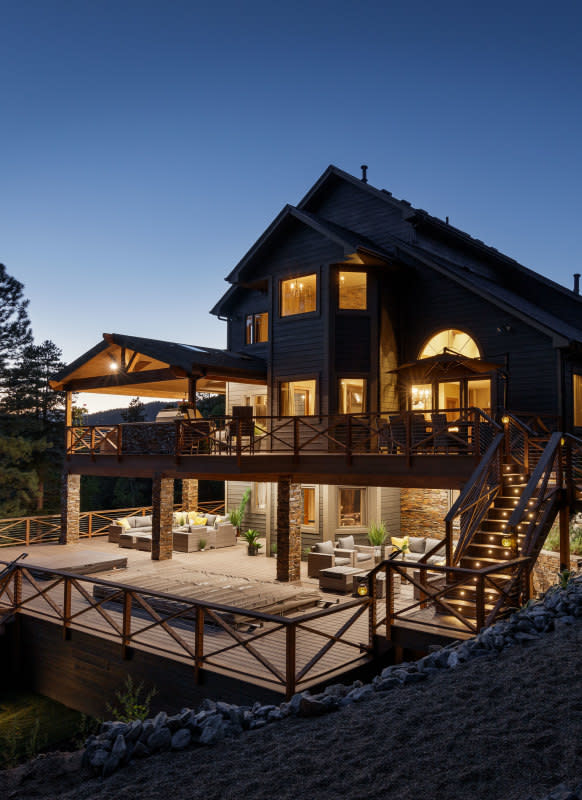How to Incorporate Uplights and Downlights into Your Home’s Outdoor Landscape Lighting Design
We all know which houses in our neighborhood look best at night, and it usually has a lot to do with the choice of outdoor lighting fixtures. When it comes to outdoor landscape lighting, a thoughtful combination of uplights and downlights can bolster your curb appeal and enhance property value. Good landscape lighting design goes beyond spotlighting your architectural style. It's a welcomed way to add ambiance to an outdoor living space and improve safety with path lighting and steps.
Phase One: Prepare Your Landscape
Choosing landscape lighting for your property isn't always easy, but like all home improvement projects, it starts with good planning. "Contemplate your yard," starts Dan Mock, VP of Operations of Mister Sparky. "What elements spark joy and serenity? You want to draw attention to these areas. Think through how to enhance the ambiance further using water features (like a gentle fountain), a well-tended garden with brick pavers, or areas with rich or unique foliage." The best lighting design also factors in landscape design and possible improvements.
Also, before you finalize your approach, prune excess leaves or branches. This can help reveal more potential as you plan positioning for landscape lights.

Photo by Rendy Novantino on Unsplash
Phase Two: Make a Landscape Lighting Plan and Choose Your Styles
Mock goes on to explain that the right outdoor lighting ideas are more than a beam of light. The right combination of outdoor pools of light will enhance your home, its landscape, and its hardscape. Whether you work with a landscape lighting designer or just step back and envision how different accent lights would enhance your home's architectural features and foliage at dusk, developing an exterior lighting plan comes first.
Post lights. Think about whether or not you'd use posts. They can offer a welcomed glow along a driveway, pathways, and entryways. They also look nice nestled among garden trails or positioned near the porch and garage. Consider how you'd use light posts not only to guide guests, but also enhance your home's exterior.
Underwater lights. For those who have a pool, pond, fountain, or a meandering stream, underwater lighting elevates nighttime festivities. In a pool, they help with safety while also enhancing your entertaining space.
Tree lights. The soft glow of tree uplights can extend the usability of your patio into the evening hours long after the sun has set. Whether you're hosting a gathering or simply unwinding after a long day, tree uplighting is a great touch for a space focused on relaxation or outdoor entertaining.
Spotlighting. Show off the beautiful architecture of your home and highlight all those intricate details and focal points. Whether it's elegant arches or unique features, spotlighting really grabs attention and takes your home's charm to the next level.

Deckorators
Low-Voltage Lights to Consider
Up Lights: These ambient light fixtures are mounted on or below ground level and are meant to focus attention upward.
Outdoor Wall Lights: Great options for patios, decks, stairways and other various locations outside.
Smart Lights: Smart lights can be used and controlled via an app, giving you more control over the light setting of your outdoor area.
Solar lights: You won't need to run power to these, but solar lighting can be a great complement to other garden lights when you don't want to disrupt your favorite plants.
Porch Lights: Porch lights can add personality to your home or backyard area. These lights give off a feeling of protection and safety.
Stairway Lights: These hardscape lights can transform traditional steps into illuminated art piece. Riser lights, path lights and under-thread lights are just a few types.
Related: Residential Lighting Forecasts Emphasize Wellness and Connection to Nature—See the Trends
How to Install Low-Voltage Outdoor Lights
1. Prepare the Area
Locate underground utilities. Before you start digging in your outdoor space, you'll need to find any underground utilities. Contact the national "Call Before You Dig" number (811) to connect with your local service for assistance.
Dig trenches for wiring. Dig trenches for your low-voltage landscape lighting following the planned layout. Ensure the trenches are deep enough to protect the wiring and comply with local regulations. Many areas require the wire to be six inches underground.
Ensure proper drainage. Ensure that the installation area has adequate drainage to prevent any standing water, which could potentially damage the lighting fixtures or wiring.
Install conduit for protection. If required by local codes or for added protection, install conduit to encase the wiring and provide extra durability against weather and physical damage.
2. Connect to Power Source
For low-voltage systems: Connect the wiring to the transformer according to the manufacturer's instructions. The transformer converts standard household voltage to low voltage suitable for outdoor lighting.
For standard electrical systems: If you're installing lighting that requires standard electrical connections, contact a licensed electrician, such as Mister Sparky, to ensure proper installation. They can also install additional outlets if needed or provide Ground Fault Circuit Interrupter (GFCI) protection for safety.
3. Test Your System
Turn on lights. Once all connections are made, turn them on to be sure they work. Check each fixture!
Adjust positioning. Evaluate the placement and positioning of the lights. Make any necessary adjustments to make sure the accent lighting and light bulbs are directing as you planned.
4. Secure Wiring and Coverings
Bury underground wiring (or secure above ground as needed). If you have underground wiring, bury it securely in the trenches, ensuring it's at the proper depth and protected from damage. For above-ground wiring, use cable clips, staples, or conduit rated for outdoor use to secure and protect the wires from environmental elements.
Consider automation. Enhance your outdoor lighting system with automation features such as timers, motion sensors, or smart home integration. These additions offer convenience and energy efficiency by automating the operation of your lights.
5. Safety Check
Ensure all connections are secure. Double-check all connections to ensure they are tight and secure, minimizing the risk of electrical hazards.
Check for any exposed wiring. Inspect the entire installation for any exposed wiring or potential hazards. Cover or address any exposed areas to prevent accidents or damage.
Test again for proper function. After completing the installation and safety checks, test the lighting system once more to ensure everything is functioning correctly before completing the project.
